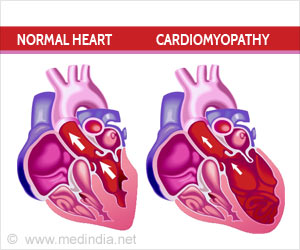- Scientists have newly developed a simpler version of an imaging protocol to diagnose heart defects
- The technique expertly scanned diseases of the heart muscle in patients in Peru
- With its advantages of being time-saving and cost effective, the imaging protocol could be appropriate for patients in the developing world if adequate personnel are trained in it
"Our CMR strategy was three to five times cheaper than current CMR exams in Peru," said James C. Moon, M.D., study lead author and professor at Barts Heart Centre, St. Bartholomew's Hospital in London. "It also can be delivered two to three times faster and is easier than conventional CMR."
Study- Cardiac Magnetic Resonance Imaging (CMR)
The researchers developed and tested a faster version of the CMR protocol using contrast dye; the parameters they measured were cardiac structure, function and scarring.
These rapid diagnostics working with the existing infrastructure took a much shorter time of 18 minutes and cost $150 per patient – these benefits resulted in significant changes in patient care.
The scans found out that
- Twenty-six percent had hypertrophic cardiomyopathy (enlargement of the heart muscle cells and thickening of the walls of the lower chambers)
- Twenty-two percent had dilated cardiomyopathy (the lower and upper chambers of the heart dilate causing failure of the heart muscles to contract and poor pumping of blood)
- Five percent had ischemic cardiomyopathy (when cardiovascular disease or heart attack cause the disease)
- Patients had 12 other uncovered pathologies including tumors, congenital heart disease and iron overload, abnormal protein deposits called amyloid plaques, genetic syndromes, inflamed vessels, clots and valve disease.
- Revealed a new diagnosis of an unsuspected condition in 19 percent of patients or led to a change of treatment in 37 percent
- Suggested a shift in care management in 5 percent of patients that was however not delivered due to inaccessibility to procedures like cardiac surgery or device therapy
- Satisfied all imaging needs in 89 percent of patients Eliminated the need for further non-invasive imaging In 7 percent of patients who underwent CMR first Did not miss any diagnoses initially found by echocardiography (pictures of the heart)
Training imagers at sites with appropriate scanner technology in the developing world will make sure a shortened protocol for evaluation of cardiomyopathies is implemented, and the impact of Cardiac Magnetic Resonance Imaging is broadened throughout the developing world.
References:
- Rapid heart imaging technique may cut costs, boost care in developing world (https://newsroom.heart.org/news/rapid-heart-imaging-technique-may-cut-costs-boost-care-in-developing-world?preview=1d08
Source-Medindia














